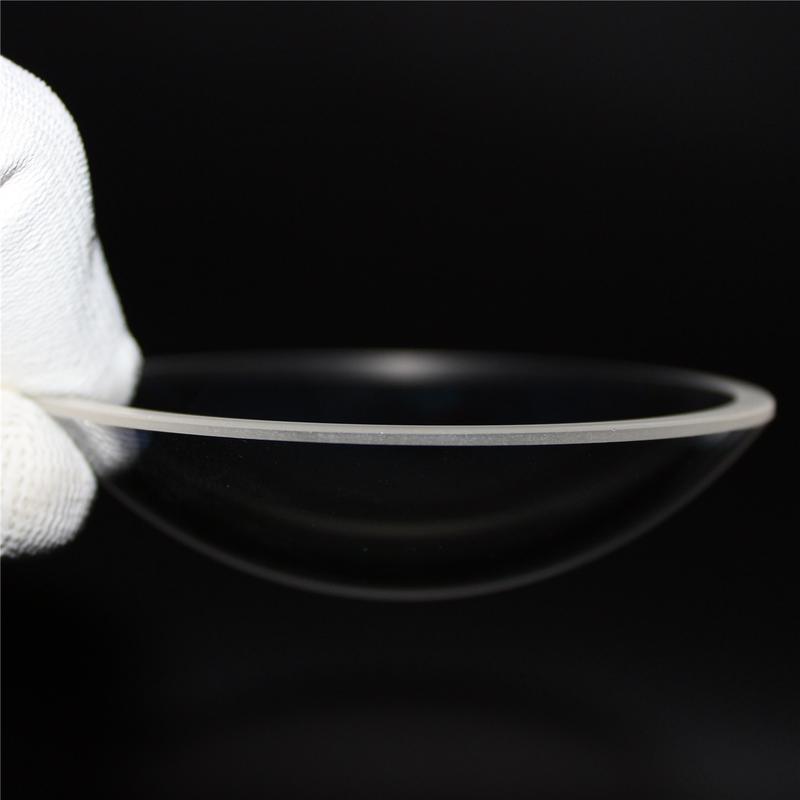Diameter 78mm optical glass dome lens for underwater camera












Diameter 78mm optical glass dome lens for underwater camera
Item Number:W-P20D2X4201A
- Outer Diameter: 3mm - 300mm
- Thickness: 1mm-30mm
- Dimension Tolerance: +/-0.05mm or better
- Surface Quality: 60-40 or better
- Surface Accuracy: 1 lambda or as requested
- Centration: 1 arc min or customized
- Coating: Optional
What is dome lens?
Dome is composed of two parallel optical surfaces. Among optics domes are unique because, unlike any other optical components, the key attribute of the dome is to have no optical effect. Generally a dome is often exposed to the environment. Accordingly, domes made from hard ceramic materials are preferred due to their ability to withstand wind and rain erosion.

Dome Port Lenses are ideal for split-level and underwater use - While dome ports will not take anything away from your work above water, their impact or difference above the surface is irrelevant. Domes are ideal for split-level and underwater work.
Domes are typically found in single-use defense applications and submersible vehicles for deep ocean exploration, sapphire glass dome has advantage from its material property.
Why use Dome ports for Underwater Photography?
● Domes help correct aberrations that occur when light travels thru water as opposed to air. Domes can deliver better results compared to flat ports, and also make it easier or possible some results that flat ports would not capture.
● Size matters - Bigger domes are better than smaller domes, for a number of reasons. The tradeoffs are; heavier, bulkier, pricier than smaller domes.
● Glass is optically superior - Glass domes are optically superior to plastic or acrylic, and they do not scratch as easily. VY not only manufacture material of glass port domes, but also plastic one. We could provide professional solution according to your requirement.
Dome lens of VY Optoelectronics Co.,Ltd
Dome lenses that VY Optoelectronics Co.,Ltd produce can protect your investment - all our domes could fit any lenses thru adaptors and clamps. This design protects your investment and optimizes your usability and upgradeability over time. Our Waterproof Camera Housing Dome Kit supports both threaded, unthreaded, hooded, curved, and fisheye lenses.
Specification of our dome lens
| Material | BK7, Fused Silica, Sapphire etc. |
|---|---|
| Surface Flatness | λ/2 |
| Diameter | 3-300mm |
| Dia. Tolerance | +/-0.05mm |
| Thickness tolerance | +/-0.05mm |
| Surface Quality | 60/40 |
| Clear Aperture | 90% |
VY produce wide range of optical dome lens with different processing technology according to exact application, welcome to inquiry with your requirement on the specification of dome lens or drawing of the lens, price will be reasonable and a best solution can be suggested.
Choices of dome lens
There are a lot of decisions when it comes to choosing the right dome port for your camera and lenses. Is a glass dome better than acrylic? What's the proper size to use with a particular lens? These are just a few of the questions we will cover in this article as well as explain what a dome is and advantage of a dome lens.
GLASS VS. ACRYLIC
• Image quality: Both glass and acrylic perform very well and optical are very similar underwater.
• Price: The decisions between the two is often made on price. Acrylic domes tend to be about half the price or less of a similar sized glass dome.
• Flare: Glass handles flares and shooting into the sun much better than acrylic. If your shooting style includes the sun in many of your wide angle shots than try to stick with glass. Acrylic domes often show reflections in these type of images.
• Depth: Acrylic domes have deeper depth ratings compared to glass domes. Most acrylic domes are capable of 150m compared to 100m for glass. You should always check the actual depth rating of your dome as some, especially the larger domes, can have significantly shallower maximum depths.
• Durability: Glass is much harder to nick or scratch but minor damage to acrylic domes can usually be repaired with polishing kits.
• Balance: Glass domes tend to be better balanced and weighted underwater. Acrylic domes, especially the larger size ones, tend to tilt port up due to the buoyancy of the port.
• Splits: Glass tends to shed water better for split images but you can still receive good results with acrylic.

DOME SIZE
All domes are sharp in the center, so when we are comparing the image quality of domes we are concerned more with the corners and edges. In general the larger the dome the better the corner sharpness. Knowing this, it seems like the solution is to use the largest dome possible but this is not always necessary, practical or the best solution. Smaller sensor cameras can use smaller domes and still retain good image quality. This is also more practical as most users of smaller sensor cameras are concerned with size. Fisheye lenses can also use smaller domes and still retain acceptable corners. In fact, in most cases a small dome is preferred over a large dome for a fisheye. This is because fisheye lenses are able to focus extremely close and the smaller dome allows us to get physically closer to our subject. This makes them better suited for close focus wide angle and the smaller size has less drag and is easier to use in tight spaces. Rectilinear lenses will benefit from a larger size dome but you want to use what is appropriate for your sensor size and focal length. Split images also benefit from a larger size dome, creating a thinner meniscus or water line. Whenever your image contains important information in the corners it's a good idea to stop down to retain good detail.






